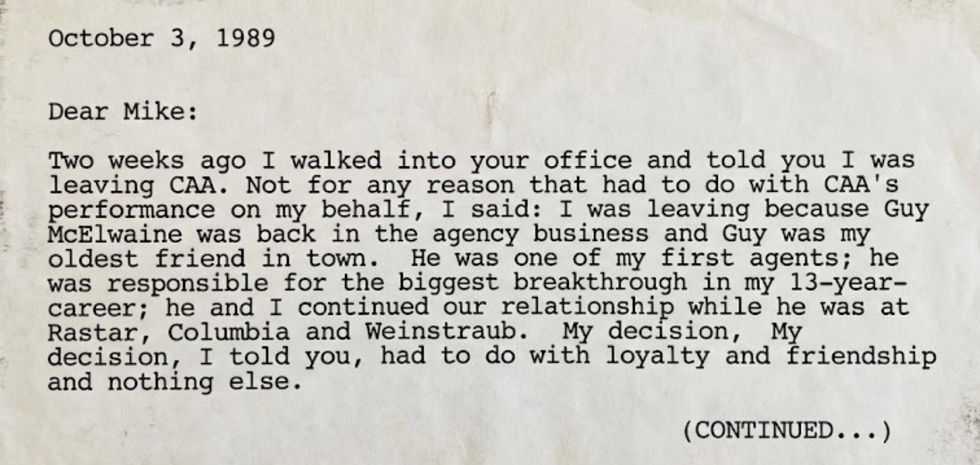Imagine the worst meal you’ve ever eaten. Fifty shades of beige, bland as cardboard, canned and mushy, expired and watered down (because there isn’t enough to go around). What if you were forced to eat variations of that meal, essentially reheated leftovers, every single day?
[quote position="right" is_quote="false"]Prisoners are boycotting and protesting the food itself.[/quote]
Welcome to prison meals.
Prison food is notoriously bad—so much so that ramen is now the most valued black-market commodity in jails, more so than cigarettes. Because federal laws only require that inmates’ diets meet the basic nutritional requirements, mealtime is another layer of punishment on top of confined living for inmates. However, food in confinement has gotten even worse with the rise of for-profit prison contractors and outsourced food services.
Last week, the Deputy Attorney General’s Office issued a memorandum, announcing the beginning of the end for privatized prisons. According to the statement, federal prison populations have risen 800 percent in the past thirty years, with 15 percent of inmates now being housed in private correctional institutions.
This comes after a 2016 U.S. Department of Justice report from the Inspector General’s office found that contract prisons incurred more safety and security incidents than Federal Bureau of Prisons (FOB) institutions. The report analysed data from 2011 to 2014 across 14 private and public prisons, and included site visits and interviews. The investigation found that contract prisons experienced greater prisoner unrest, offered less security for inmates, had dwindling rehabilitation services, and had declined in the quality and quantity of prison food.
Has prison food always been this bad?
A 1946 vintage prison menu from Alcatraz shows chow hall meal options that could have been been copied from a farm-to-table restaurant in Brooklyn: roast shoulder of pork with sage dressing, buttered beets, bechamel sauce, mustard greens, spiced crab apples, fresh oranges, coffee and tea. Oh, to be alive and imprisoned in the days before mystery meat and nutraloaf!
This FOB menu from 2014 isn’t nearly as exciting but seems adequate enough, offering fresh fruits and vegetables and even vegetarian options. But what’s written on paper doesn’t necessarily reflect what happens in the chow hall. The Marshall Project recreated prison meals from around the country to show how inadequate (and depressing) the meals actually are, with portions that hardly constitute a full meal.
There is a great deal of mistrust and misinformation about what really goes on in prison cafeterias, but a new study from the University of Michigan by Roland Zullo titled, “Food Service Privatization in Michigan’s Prisons: Observations of Corrections Officers”, reveals disturbing and inconsistent practices among two food service contractors, Aramark and Trinity Services Group.
Recognize either of these companies? They don’t just cook food for correctional facilities. They hold contracts with colleges, universities, and civilian groups across the country. But in prison, the quality of food, much like everything else, takes a nosedive. Correctional officers who were interviewed (and whose identities have been protected) witnessed food service employees routinely watering down meals, skimping on seasonings and spices, falsifying food expiration dates, and preparing insufficient servings of food for hungry prisoners in order to cut corners and recoup more money per tray of food sold. After all, their contracts aren’t paid by the cost of the food prepared, but by the number of food trays that are scanned and returned at the end of each meal.
[quote position="full" is_quote="false"]Because federal laws only require that inmates’ diets meet the basic nutritional requirements, mealtime is another layer of punishment on top of confined living for inmates.[/quote]
According to the guards, the food service workers had little training and no understanding of the the important role that food plays in prisoners’ lives. Mealtime isn’t just for nourishment. According to the guards, everything in prison revolves around eating. Prisoners’ work and free time is scheduled around it, it’s often their only time to socialize, and because of the crowds each meal draws, the chow hall requires heightened security.
Food isn’t the only thing that passes through the kitchen; COs consider it the number one location of contraband and deviant activity, and any misstep in the kitchen can reverberate through the entire prison and instigate unrest, even violence.
“It should be the most controlled, and now it’s not. It’s the least,” said one CO.
If you’ve ever watched the Netflix series “Orange is the New Black,” which depicts life in a privatised women’s correctional facility, you know that they’ve done an accurate job of portraying prison life as it’s described by Michigan prison guards: 5a.m.breakfasts, long lines, shrinking portions, watery beige foods, plummeting food safety, and increased prisoner protests. The guards describe the contracted workers as incompetent cooks that “on some days if they don’t run out, there will be other problems with the food. Raw, undercooked, sometimes burnt, sometimes it’s soupy. They screw it up somehow.”
COs recount stories of varying horror: bugs cooked into collard greens, prisoners spitting out rocks found in their food, rancid ingredients frozen and then cooked into dishes and disguised with extra butter, an officer finding a mop string mixed into spaghetti. The lack of care and respect for the food that the prisoners (and the guards) eat is shocking.
Interestingly enough, the same companies that dish out prison slop also serve our public schools, a fact that has not gone unnoticed by disgruntled school children. High school students in Chicago used the prison food standard as a benchmark of low quality and nutrient-deficient meals served in their cafeterias, and engaged in civil disobedience by boycotting the food as a means of negotiation with public school authorities.
So what’s the solution?
While public school students are able to take photos and video to document the reality of what winds up on their plates, inmates don’t have legal access to show proof of their meals. All they can do is go on strike.
[quote position="left" is_quote="true"]Raw, undercooked, sometimes burnt, sometimes it’s soupy. They screw it up somehow.[/quote]
Hunger strikes have been a historic method of civil disobedience to protest solitary confinement and political injustice, but now prisoners are boycotting and protesting the food itself. Over the past few years and across the country, inmates have staged mass protests and organized strikes, and some have filed class action and civil rights lawsuits, calling their punishment cruel and unusual: dwindling portions and low-quality food that has caused severe weight loss and malnutrition, forcing them to deplete their commissary budgets and basically live off of ramen or eat toothpaste out of sheer hunger.
Phasing out private prisons doesn’t necessarily mean contracted food service providers like Aramark and Trinity will be replaced. But a growing movement to include prison gardens and fresh cooked food in prison programs are making strides, and could be the answer to state and federal problems. Initiatives like The Garden Project and Insight Garden Program are not just seeking to improve nutrition density and the flavor of food served to prisoners, but to connect growing food with rehabilitation.
Prison gardens are a compelling solution to many of the budgetary, nutritional, and behavioral issues correctional facilities and their prisoners face, and fresh produce would surely be a welcome substitute for nutraloaf by inmates nationwide.
















 A young lion playing with an older animal
A young lion playing with an older animal A colorful bird appears to be yelling at it a friend
A colorful bird appears to be yelling at it a friend An otter appears like it's holding its face in shock
An otter appears like it's holding its face in shock Two young foxes playing in the wild
Two young foxes playing in the wild Two otters appear to be laughing together in the water
Two otters appear to be laughing together in the water A fish looks like it's afraid of the shark behind it
A fish looks like it's afraid of the shark behind it A bird appears to be ignoring their partner
A bird appears to be ignoring their partner A squirrel looks like it's trapped in a tree
A squirrel looks like it's trapped in a tree A bear holds hand over face, making it appear like it's exhausted
A bear holds hand over face, making it appear like it's exhausted A penguin looks like its trying to appear inconspicuous
A penguin looks like its trying to appear inconspicuous A young squirrel smells a flower
A young squirrel smells a flower An insect appears to be smiling and waving at the camera
An insect appears to be smiling and waving at the camera An otter lies on its side apparently cracking up laughing
An otter lies on its side apparently cracking up laughing Two monkeys caught procreating
Two monkeys caught procreating A young chimp relaxes with its hands behind its head
A young chimp relaxes with its hands behind its head A snowy owl appears to be smiling
A snowy owl appears to be smiling  A monkey holds finger to face as if it's lost in thought
A monkey holds finger to face as if it's lost in thought A turtle crossing the road under a 'slow' sign
A turtle crossing the road under a 'slow' sign A polar bear lies on its back like it's trying to hide
A polar bear lies on its back like it's trying to hide A rodent strikes human-like pose
A rodent strikes human-like pose
 An excerpt of the faxCanva
An excerpt of the faxCanva

 Robert Redford advocating against the demolition of Santa Monica Pier while filming "The Sting" 1973
Robert Redford advocating against the demolition of Santa Monica Pier while filming "The Sting" 1973


 Image artifacts (diffraction spikes and vertical streaks) appearing in a CCD image of a major solar flare due to the excess incident radiation
Image artifacts (diffraction spikes and vertical streaks) appearing in a CCD image of a major solar flare due to the excess incident radiation